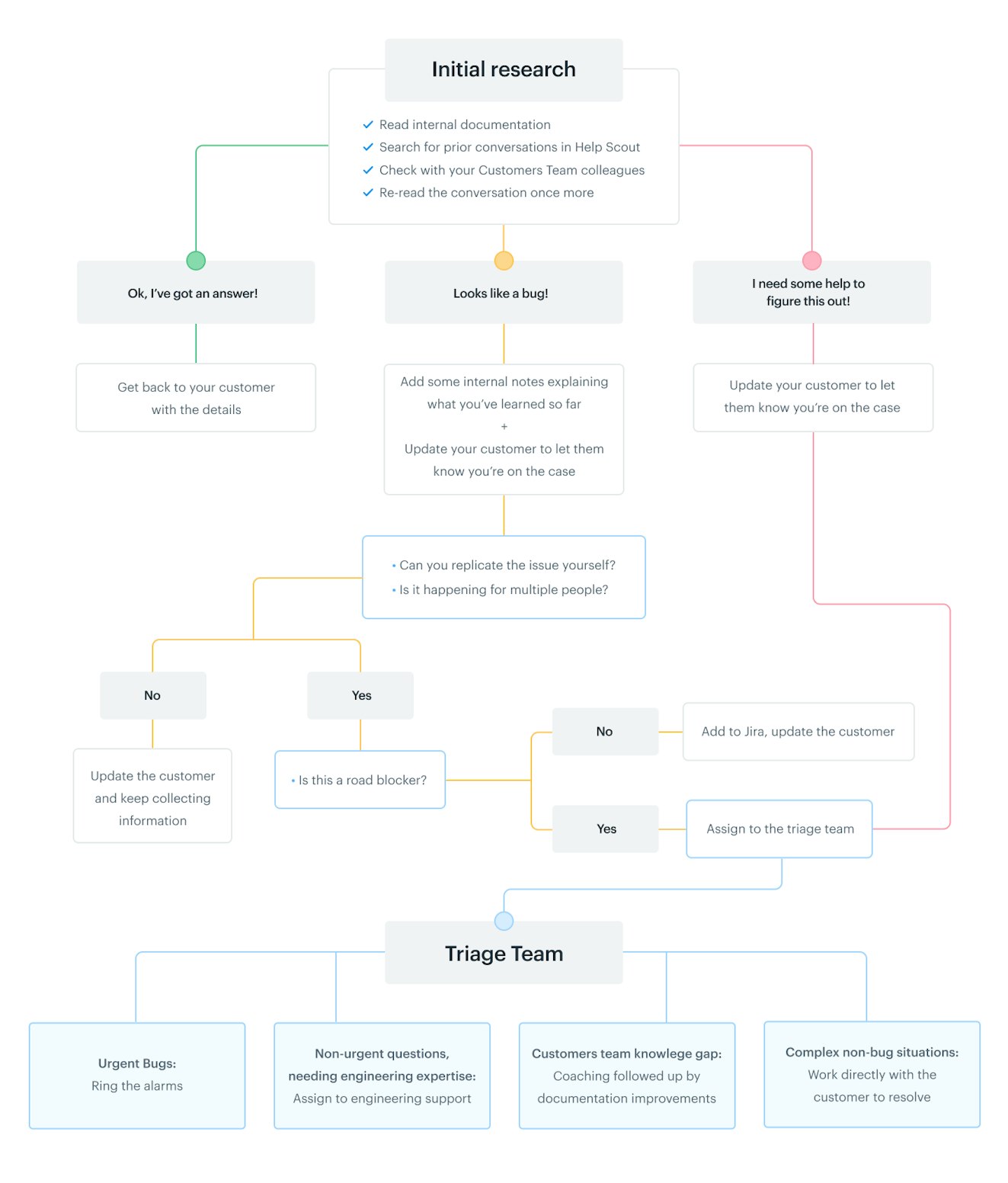Our customer service team at Help Scout is full of smart and experienced people. It’s not by accident — as a remote-first company spread out all over the globe, hiring folks who are knowledgeable and capable is a deliberate strategy.
Even so, there is no end to the edge cases, odd bugs, and esoteric details in SaaS support. These are the conversations where our team relies on a triage process to figure out what's happening and what needs to be done about it.
Triage is a term borrowed from the medical field, where it’s a process used to identify the most urgent cases and decide who to treat in which order, particularly when there are limited resources available.
For Help Scout’s Customers team, triage has a similar meaning — figuring out which conversations need to be escalated to more specialist help, including to our Engineering team. When the Help Scout team was small, this sort of escalation could be done quite casually. Often, simply assigning a conversation directly to the engineer who had worked on that part of the product was enough to get the required help.
As the team grew larger, that process began to break down. There are now many more engineers working on a much larger product, and more new folks on the Customers team who don’t have the same level of knowledge of Help Scout’s development over time.
The challenge
There were a few signs that suggested to Help Scout’s customer service leaders that some process improvements should be made:
More complex conversations were sometimes getting stuck, languishing in the bottom of the queues waiting for “the right person” to pick them up.
Some conversations were being assigned to engineers that really could have been handled by the more experienced Customers team members.
Sometimes conversations correctly assigned to Engineering didn’t include all the relevant details, leading to some delays.
When our engineers investigated tricky cases, the information they were able to uncover didn't always make it back to the Customers team, so it wasn’t able to be reused.
The Customers team, led by Product Specialist Elyse Roach and Head of Support Abigail Phillips, worked together to understand the root causes, and they put together some alternate approaches.
A new triage approach
Rather than rush right into a new process, the team took some time to experiment with small changes and run some team training sessions to see if there were quick wins to be had.
Ultimately, with more team growth expected, it became clear that a more robust system was needed. The goals were to:
Make sure that Customers team members knew where to look for answers first.
Scale from an individual managing all triage to a small team, to be a bridge from frontline support to Product teams and their engineers.
Set some standards for how to effectively escalate a conversation.
Create a decision tree to help newer members correctly categorize issues and decide when to escalate to the triage team.
Spread both the specific product knowledge and workload among more engineers.
For the Customers team, those goals were addressed through a reworked process, shown in the diagram below:

In addition to process changes for Customers team members, the engineers decided to implement a support rotation for each Product team.
When their turn comes up, the engineer on duty is responsible for any support issues escalated during their turn. They don’t necessarily have to solve the issue, but they are responsible for coordinating the team’s response and communicating that back to the Triage team.
Rolling out the process change
Coming up with a new process is sometimes easier than getting everybody to actually use it. Customers team leaders Abigail and Sarah-Mei, alongside Elyse, used a handful of different approaches to spread the word and get everyone aligned:
They discussed the process in weekly Zoom meetings.
They built out a triage field guide and posted that on our intranet.
They implemented ad-hoc coaching by Triage team members as they noticed areas that could be improved.
The internal field guide is the source of truth, and it includes useful definitions, flow charts and FAQs that are especially helpful for new team members’ onboarding.
Continual improvement
Since this new triage process was rolled out, our Customers team members can be confident that they are escalating the right conversations in the most effective ways. Our Engineering team is able to apply their knowledge more productively, since by the time issues reach them the details and relevant context have been added. Ultimately, our customers are receiving better service as their most complex issues are handled more quickly than ever before.



